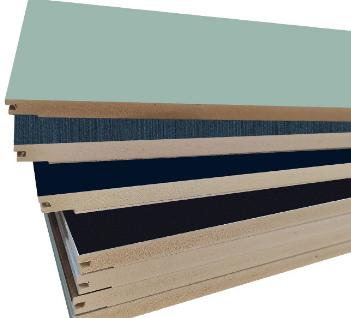In the realm of contemporary interior and exterior design, the utilization of innovative materials has become a prevailing trend. One such material that has gained immense popularity is WPC (Wood-Plastic Composite) wall panels. These panels have revolutionized the way we approach wall cladding, offering a myriad of advantages over traditional options. This article explores the rising popularity and numerous benefits of WPC wall panels in modern architecture.
WPC wall panels are a composite material consisting of a blend of wood fibers or flour and thermoplastics such as polyethylene or polypropylene. This combination creates a robust and versatile material that exhibits the aesthetic appeal of wood while possessing the durability and longevity of plastic. The panels can be manufactured in various sizes, shapes, and colors, offering designers and architects a wide range of options to choose from.
Enhanced Aesthetics and Design Versatility
One of the significant advantages of WPC wall panels is their ability to mimic the natural beauty of wood while offering a more consistent and uniform appearance. These panels can be embossed or textured to resemble different wood grains, enabling designers to create stunning visual effects. Additionally, WPC wall panels are available in a multitude of colors and finishes, allowing for endless design possibilities and customization.
Exceptional Durability and Longevity
Unlike traditional wood wall cladding options, WPC panels are highly resistant to rot, decay, and insect damage. The incorporation of thermoplastic polymers enhances their water resistance, making them suitable for both indoor and outdoor applications. WPC wall panels are also less susceptible to warping, cracking, or splintering, ensuring their structural integrity over time. With proper maintenance, these panels can maintain their original appearance for years, making them a cost-effective choice in the long run.
Low Maintenance Requirements
Compared to natural wood, WPC wall panels are relatively low maintenance. They do not require regular staining, painting, or sealing to protect against moisture and UV rays. Simple cleaning with mild soap and water is sufficient to maintain their appearance. This makes WPC wall panels an attractive option for commercial spaces, residential buildings, and high-traffic areas where frequent maintenance might not be practical.
Eco-Friendly and Sustainable Choice
WPC wall panels contribute to sustainable architecture by utilizing recycled materials such as wood waste and recycled plastics. By reducing the demand for virgin wood and plastic, these panels help conserve natural resources and minimize environmental impact. Additionally, the manufacturing process of WPC panels consumes less energy and produces fewer greenhouse gas emissions compared to traditional materials, making them an eco-friendly choice.
Easy Installation and Cost-Effectiveness
Installing WPC wall panels is a straightforward process that requires minimal effort and time. The panels can be easily cut, drilled, and fastened using conventional tools. This ease of installation translates into reduced labor costs and shorter construction timelines. Furthermore, the long lifespan and low maintenance requirements of WPC panels contribute to their overall cost-effectiveness, making them an economical choice for architects, builders, and homeowners alike.
The increasing popularity of WPC wall panels in modern architecture is a testament to their numerous benefits. From their aesthetic appeal and design versatility to their durability, low maintenance requirements, and sustainable nature, these panels offer a range of advantages over traditional materials. As the architectural industry continues to embrace innovation, WPC wall panels are expected to play a significant role in shaping the future of interior and exterior design.

